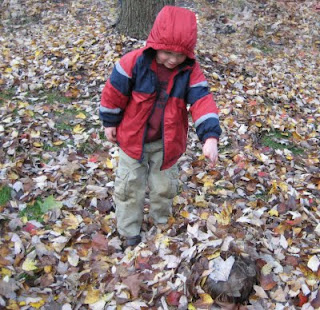***
It’s nearly dusk on Halloween and, once again, you’re running behind. You sprint into the nearest grocery store and scan the shelves, looking for something to hand out to your trick-or-treaters. You find your resolve weakening. Sure, you’d like to hand out treats with less packaging, something not laden with sugar. But the bulging bags of candy look so tempting …
Hold it right there. With a little help from Green Halloween®, an eco-friendly, not-for-profit movement, you can avoid this situation entirely.
What is Green Halloween®? Founder Corey Colwell-Lipson puts it this way. “Green Halloween® is a community movement to create child and Earth-Friendly holiday traditions, beginning with Halloween. Green Halloween® incorporates choices from at least one of three considerations: child-friendliness (including health), Earth-friendliness, and people-friendliness (the people who grow or make the products we buy or use). Ideally, Halloween choices and purchases would take all three areas into account but that is often hard to do. We suggest that families do what they can and what will make their Halloween and their consciences happy.”
Corey Colwell-Lipson was inspired to start this grassroots movement while taking her daughters trick-or-treating in 2006. While most houses handed out typical sugary Halloween fare, a few gave her daughters non-sweet treats like bubbles and stickers. As she recalls on her website, “I was so thrilled that someone thought outside the candy-box.”
She vowed to visit these homes the next year, but soon forgot which ones they were. An idea dawned. “I mentioned to a nearby parent, ‘Wouldn’t it be great if there were a sign you could place on your door or window that notified trick-or-treaters that their upcoming treat would be healthy?’ This way, parents could seek out those homes and turn trick-or-treating into a scavenger hunt – a hunt for treasures rather than treats.” And thus, a community movement was born.
Green Halloween® launched in 2007 in the Seattle, Washington area. Local businesses jumped on the bandwagon, asking to use the Green Halloween® logo for their products. “[We want to] make our logo a recognized symbol which will be used on holiday products such as for trick-or-treating, birthday and holiday gift bags items, and stocking stuffers,” says Colwell-Lipson. “[In 2007, you saw] our logo on a few items. [Now], we hope that our logo will be meaningful to the masses: when parents see our logo, they’ll know that the item they are buying meets our standard of child/planet/people friendliness. In addition, whenever our logo is used, a portion of the sales of that product will go towards helping others and or our planet.”
Colwell-Lipson was encouraged by the response she’s received from other parents, local organizations and businesses. She decided to tackle other holidays next. She and her mother, Lynn Colwell, co-wrote Celebrate Green! Creating Eco-Savvy Holidays, Traditions and Celebrations for the Whole Family and launched the Celebrate Green! website in 2008.
“The use of petroleum, palm oil and non-recycled tree products are examples of unsustainable practices that we hope to change,” she says. “All traditional holidays, including Halloween, make ample use of products made from these unhealthy or environmentally unfriendly materials, and yet numerous alternatives exist. Our planet has a limited ability to regenerate itself. [We seek] to reduce our eco-footprint by using our collective creativity, flexibility and common interest in the planet to create new holiday traditions while maintaining the heart and soul of our holidays.”
She adds, “My broader goal is to integrate easy, affordable, fun, kid and Earth-friendliness into all holiday traditions such as birthdays and Christmas. I hope that being ‘green’ all year long will become a notion embraced by mainstream America.”
So, how can you get started this Halloween? Here are just a few ideas from Green Halloween®:
* Make your own bags to take trick-or-treating.Colwell-Lipson says, “Putting some green into your Halloween does not have to be difficult or costly. In the continuum of being green, all families can hop on board! You can start wherever you already are. For example, if your family already eats organic and shops mostly locally, Green Halloween® offers additional ways you can make your holiday even healthier and more green … If your family has yet to try healthy alternatives, this is a great year to start!"
* If you are hosting a party, keep your focus on fun rather than treats. You might dunk for apples or build your own scarecrow.
* Hand out items to trick-or-treaters that are environmentally sustainable, healthy for kids, and made using fair work practices. Think spinning tops, stickers, or seashells over candy.
* If your heart is set on handing out candy, Colwell-Lipson suggests Endangered Species Chocolate (a portion of the proceeds go to charity) or Yummy Earth’s candy drops.
"The Green Halloween® website offers even green-newbies fun, easy and affordable ways to start new holiday traditions your whole family will enjoy,” says Colwell-Lipson. Visit Green Halloween® and download a Guide for Parents (this is a .pdf file) or stop by Celebrate Green! for other green holiday ideas. Happy Halloween!













